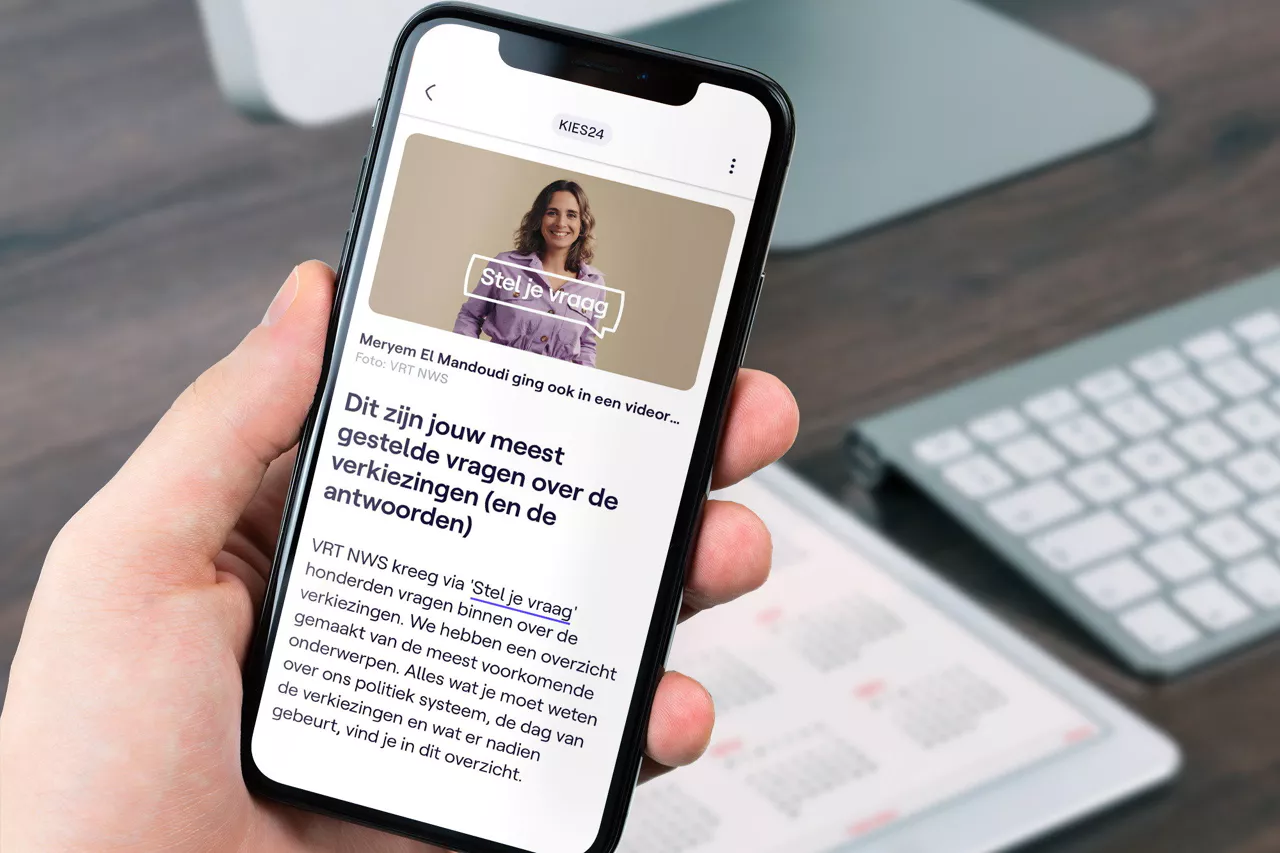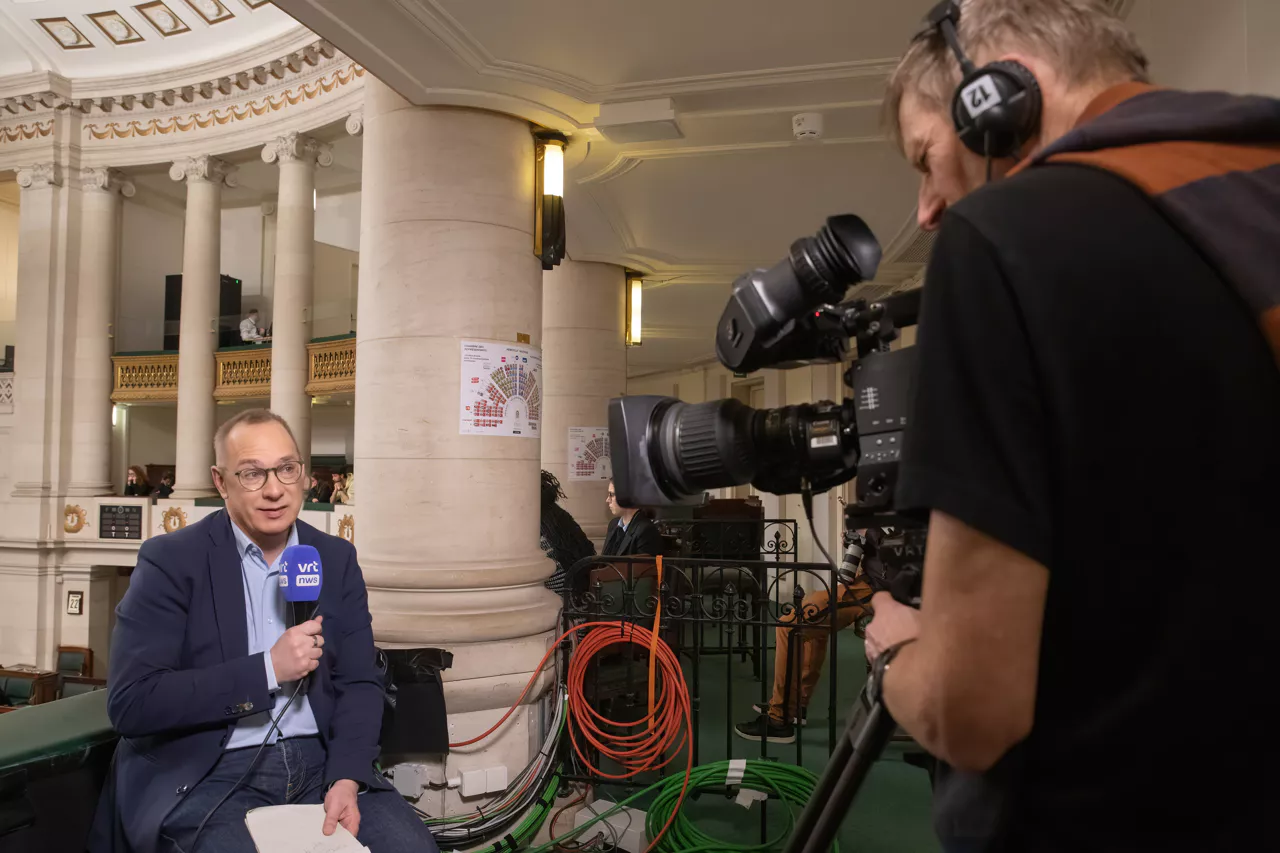
May 23, 2024
Empowering voters: delivering concise and customised election coverage across platforms
In June and October, Flanders is heading to the polls. As a public broadcaster, VRT aims to provide all the necessary political insider information. That is why the news department VRT NWS offers several initiatives that puts the voter at the center, with clear information and tailored interpretation.
VRT's core mission is first and foremost to inform all Flemings. “During the elections it is of course our task to provide the population with correct and complete information. We bring this to the end user in the clearest and most accessible way possible,” says editorial director online at VRT NWS, Thomas Van den Bossche. “We see that our users are very much looking for basic information about the elections. Which parties can I vote for, who is on the electoral lists and what do all these parties stand for? So from there, we strategised with VRT NWS, and started thinking about formats and headings.”

Short, clear and multi-platform
“It used to be that our election content departed much more from the linear programmes, but now we develop sections entirely with online distribution in mind. For instance, a number of new formats have been developed especially for this election. ‘Ask Your Question’ is one of them. In it, we asked our users to send in their questions around the elections. In the end, it involved more than 2,000 concrete questions that we were able to work with. Journalist Meryem El Mandoudi repackaged these questions, and especially the answers to them, into short accessible video explainers. We are already playing these on the website. They are also being adapted into reels for Instagram to post there later. And in the last two weeks before the elections, they will also be shown linearly in the news broadcast on TV. We make our content and information available on as many platforms as possible.”
Another format that resulted from VRT NWS's strategy are ID kits. “These are very clear and scrollable articles in which we highlight the political parties. Who are the leaders? What are their main positions? Or what is the history of this party? Always with the aim of doing so in the clearest way possible. With lots of text and pictures and not just continuous text. After all, we know that 80% of our users view our content on mobile. Therefore, articles cannot be too long.” The ID kits also include videos with Ivan De Vadder, which will again be played very widely. Think TikTok or Instagram, for example. The platforms par excellence where young people are on.
Half a million new voters
First-time voters are also in the spotlight at VRT NWS in this election campaign. “There has never been such a large group of young people voting for the first time. Some 500 000 young people are faced with elections for the very first time. It is therefore logical that they are looking for both the basic information as well as the practical side of things. How do you vote? Via a computer or old school with pencil on paper? What should I take with me to the voting booth? But the ideological questions as well. What impact do the Flemish elections have on my daily life? What about the European ones? Which parties are there to vote for and what positions do they defend?
To meet these questions, it was soon decided to develop a specific youth voting test for nws.nws.nws in addition to the regular voting test. The editors developed it in their familiar graphic style: with sliders, accessible graphics and language that connects to the world of young people. Thus, the voice test is also very recognisable to their audience on instagram.” The youth vote test has now been completed almost 300,000 times, while the regular vote test has now been completed almost 5 million times.
Lonne Van Erp and Louise Hoedt are put forward by VRT NWS JONG editors to interpret the youth elections. “That is not an obvious assignment. In Belgium we are in a complex political system, but Lonne and Louise succeed like no other in explaining the workings of our political system in young people's language. Moreover, they belong to that target group themselves, so they know better than anyone what is currently on the minds of young people.”
Finally, the well-known in-depth commentary programmes around the elections also invariably remain. “These are programmes with which we have years of experience and which are very important for the DNA of VRT NWS. But here, too, the intention is to think multiplatform. The debates and reports we see in this kind of interpretation programmes, we play out in our liveblog for the site and app, but also repackaged or not on our socials. This is how we increase reach and make our content widely accessible.”



